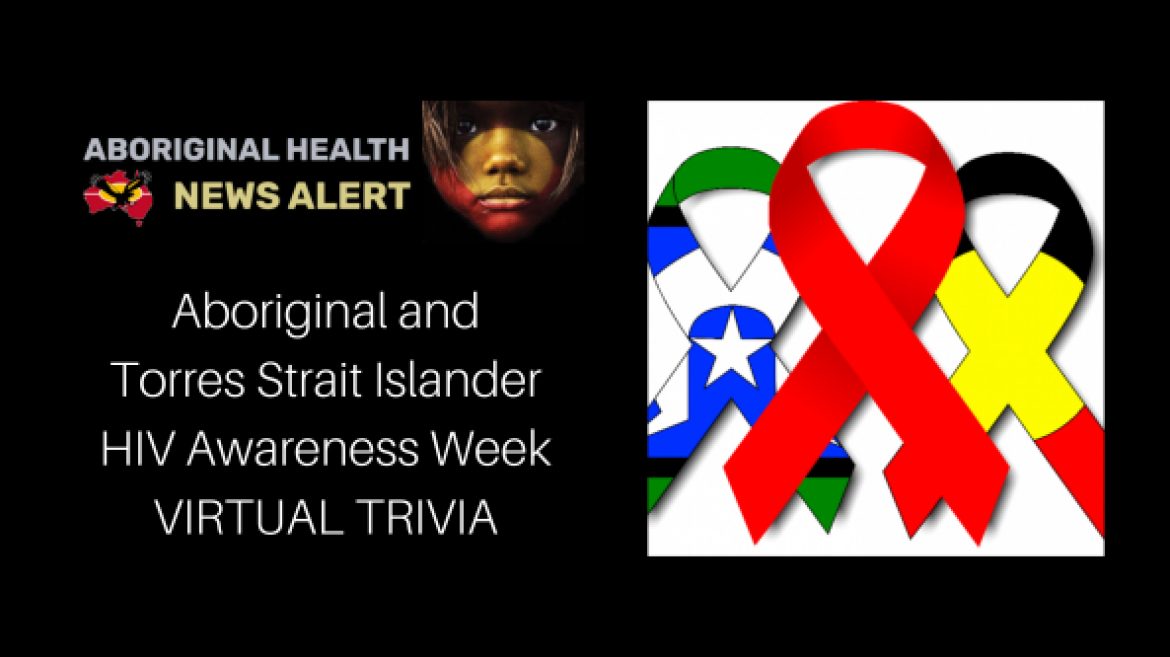Archive For: General
HIV Awareness Week 2020 virtual trivia – bring your ‘A’ game
November 26 2020 HIV Awareness Week 2020 virtual trivia – bring your ‘A’ game Rates of HIV and STI notifications are higher among the Aboriginal and Torres Strait Islander population than for the non-Indigenous population. Aboriginal and Torres Strait Islander HIV Awareness Week (ATSIHAW) is held in the first week of December each year, to coincide ... Read MoreAs We Race Toward a COVID-19 Vaccine, Where Are We With HIV?
June 04 2020 Allow me to begin with scenes from my life: In my office men’s room, a man kicks the toilet seat up with his foot to avoid touching it. Passengers on the subway look suspiciously at her other, searching for signs of illness, and quickly move away from anyone who coughs. Family members ... Read MoreIncreased usage and confidence in antiretroviral PrEP for the prevention of HIV found in UNSW study
The number of gay and bisexual men using PrEP to prevent HIV infection has almost doubled in the last two years, according to the latest report from the PrEPARE Project. The national online survey of Australian gay and bisexual men found that 43% of gay and bisexual men had used the antiretroviral drug in 2019, ... Read MoreClosing The Gap Report 2020
Closing the Gap report 2020ACON Opposes NSW Government Moves To Legislate Mandatory HIV Testing
Nov 6, 2019 NSW’s leading HIV organisation, ACON, opposes moves by the NSW Government to follow NSW Labor’s plan announced last week to introduce a Bill to enforce mandatory testing of individuals whose bodily fluids come into contact with frontline workers. In an announcement made today, the Government intends to introduce a scheme that will ... Read MoreMedicare ineligible PLHIV in Australia An analysis of new data with recommendations for systemic improvements
October 2019 This NAPWHA report is an analysis drawing together several years’ worth of data from the main pharmaceutical industry suppliers of compassionate access antiretroviral (ARV) therapy in Australia and combines this with, for the first time, data from the State and Territory jurisdictions to produce the most accurate estimate ... Read More
August 12, 2019
A bottle of Atripla, the first once-daily regimen for treatment of the HIV-1 infection in adults, sits on the podium at the conclusion of a press conference announcing the drug’s approval by the Food and Drug Administration, at the National Press Club, Wednesday, July 12, 2006 in Washington, D.C. Since the introduction of azidothymidine in 1987 there have been major improvements in the treatment of HIV. In a recently published study, Forsythe and colleagues demonstrate that the advent of antiretroviral therapy (ART) in the mid 1990s has yielded significant achievements in global public health. Between 1995 and 2015, 9.5 million deaths have been averted worldwide, and global economic benefits are estimated at over $1 trillion.
In 2014, the United Nations Program on HIV/AIDS established the 90-90-90 treatment targets for the year 2020. These targets aim to have 90% of people living with HIV know their HIV status; 90% of those who are diagnosed receive continuous treatment; and 90% have viral suppression. The year 2020 is around the corner. Denmark appears to have been the first country to have achieved all three 90-90-90 targets. But, other countries have not achieved this kind of success. To illustrate, the percentage of HIV-infected people who have viral suppression is 61% in the U.K, and only 30% in the U.S.
If treatment scale-up of ART achieves the global 90-90-90 targets of the Joint United Nations Program on HIV/AIDS, a total of nearly 35 million deaths are projected to be averted between 1995 and 2030. Moreover, approximately 40 million new HIV infections could also be prevented by ART, and economic gains could reach over $4 trillion by 2030. However, both in terms of prevention of HIV transmission and treatment of the disease significant challenges remain. In 2017 there were 1.8 million new HIV infections and almost 40 million people living with HIV worldwide. Also, there were one million AIDS-related deaths. And, of people living with HIV, 41% were not receiving treatment.
It’s agreed that continued expansion of treatment scale-up to reach the 90-90-90 targets constitutes good value for money for government authorities and payers in every global region. However, different jurisdictions must overcome different sets of barriers to realize these gains. In Europe, the main issue has been getting people to test for HIV. In the U.S., the persistent problem has been linkage with and retention in care: That is, a high proportion of people living with HIV knows their status but has not started or stayed on treatment.
And, invariably, a limiting factor is health budget constraints worldwide. This applies to all aspects of HIV treatment, from diagnostics, to the logistics of supply and storage of medicines, to treatment and follow-up. And, as transmitted and acquired resistance increases worldwide, individual patient viral load monitoring will be critical, as well as judicious use and reimbursement of second- and third-line ART medications.
Joshua Cohen







